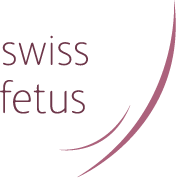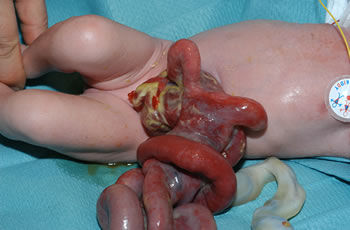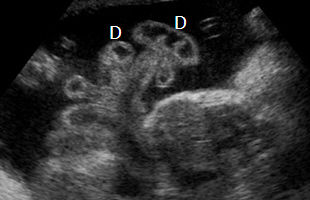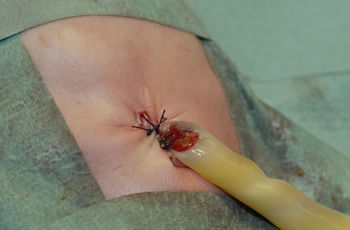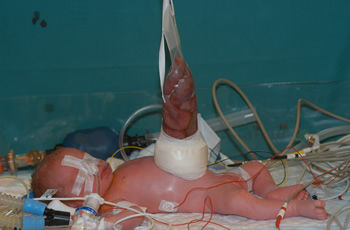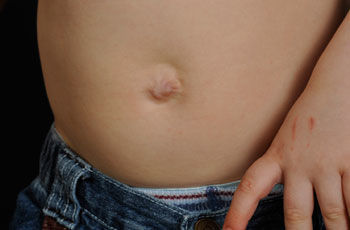Gastroschisis
Problem
Gastroschisis is a defect of the abdominal wall causing protrusion of the abdominal contents. The defect, adjacent to the umbilicus, arises at a very early stage of embryonic development and its cause is unknown. The result is that the unborn child’s abdominal contents (intestine, stomach) pass into the amniotic sac and float in amniotic fluid. This causes some damage to the intestine.
Diagnosis
This malformation is visible in prenatal ultrasound scans performed from about the eighteenth week of pregnancy. Segments of intestine (I) situated outside of the fetus are visible as circular formations. Gastroschisis is generally an isolated defect, i.e. the child is otherwise healthy.
Therapy
Children with gastroschisis are delivered at about 37 weeks of pregnancy by cesarean section to prevent further damage to the intestine during vaginal delivery. With the newborn child conscious and under local anesthesia (no general anesthesia), the abdominal contents are reinserted into the abdomen and the abdominal wall is closed (1). Where this proves impossible or the intestine is discontinuous, the child is fitted with a “silo” (2). In this procedure the intestine is housed temporarily inside a silastic pouch that is stretched on a tape. The intestine then slides gradually into the abdominal cavity under its own weight, with the result that about a week after the operation the abdominal cavity can be closed.
Outcome
In most cases of gastroschisis the newborn child’s intestine does not function properly at first, meaning that the child has to be fed intravenously with a special diet for several weeks. Once the intestine is functioning normally the child can be sent home.
